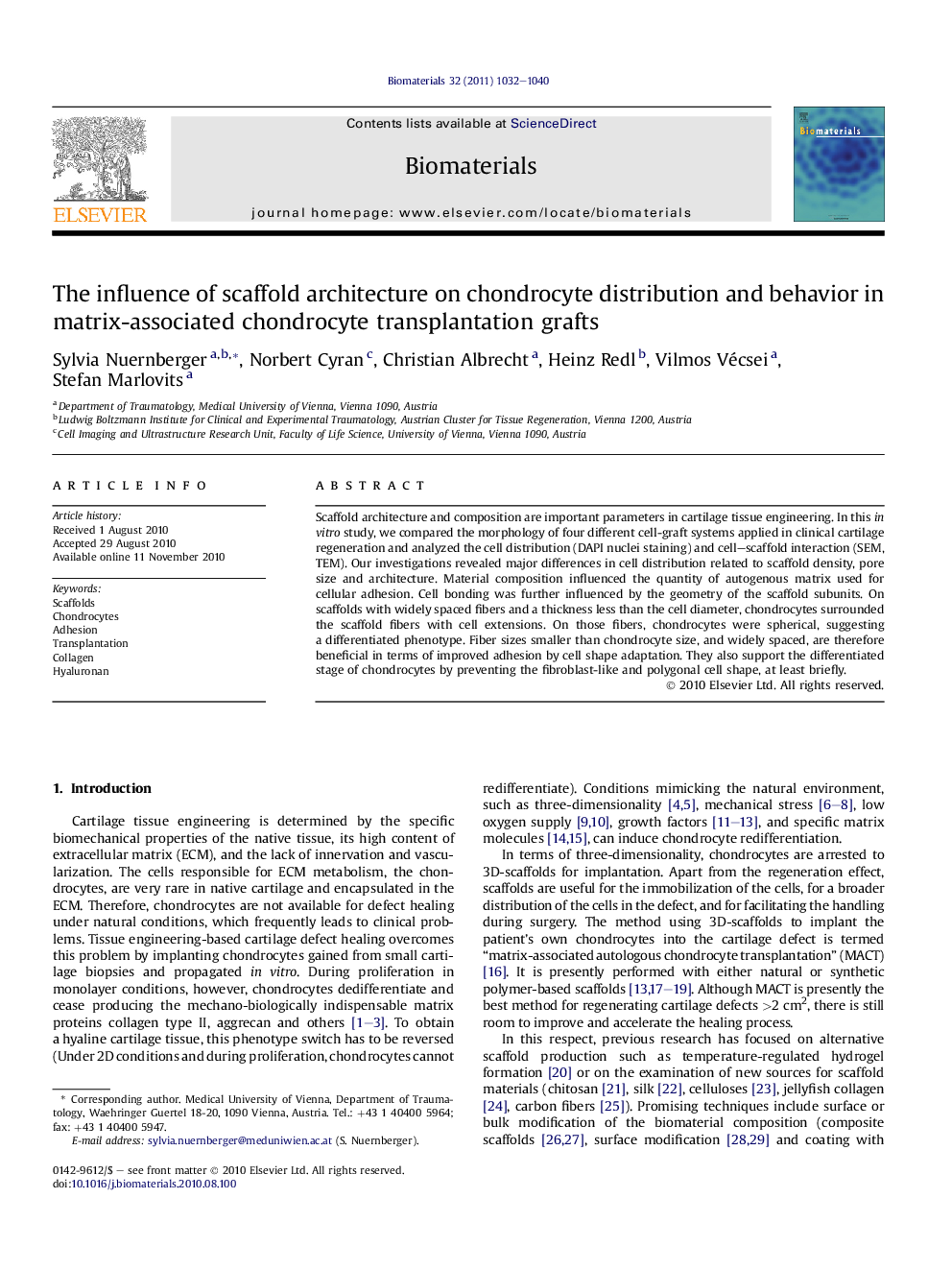| Article ID | Journal | Published Year | Pages | File Type |
|---|---|---|---|---|
| 8232 | Biomaterials | 2011 | 9 Pages |
Scaffold architecture and composition are important parameters in cartilage tissue engineering. In this in vitro study, we compared the morphology of four different cell-graft systems applied in clinical cartilage regeneration and analyzed the cell distribution (DAPI nuclei staining) and cell–scaffold interaction (SEM, TEM). Our investigations revealed major differences in cell distribution related to scaffold density, pore size and architecture. Material composition influenced the quantity of autogenous matrix used for cellular adhesion. Cell bonding was further influenced by the geometry of the scaffold subunits. On scaffolds with widely spaced fibers and a thickness less than the cell diameter, chondrocytes surrounded the scaffold fibers with cell extensions. On those fibers, chondrocytes were spherical, suggesting a differentiated phenotype. Fiber sizes smaller than chondrocyte size, and widely spaced, are therefore beneficial in terms of improved adhesion by cell shape adaptation. They also support the differentiated stage of chondrocytes by preventing the fibroblast-like and polygonal cell shape, at least briefly.
